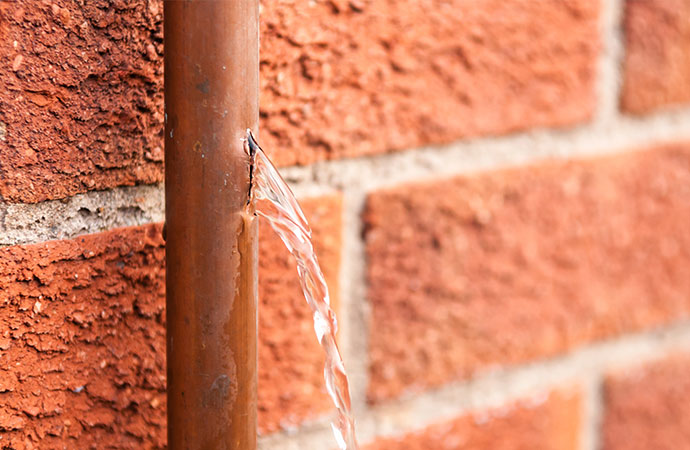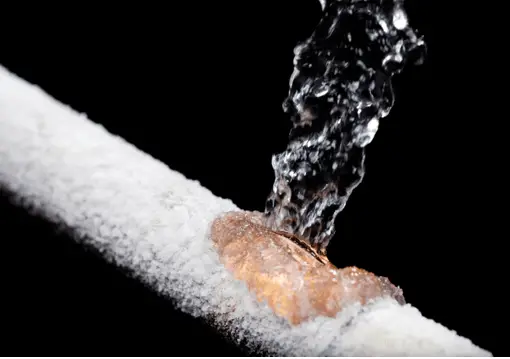Stop the Flood: Techniques for Spotting and also Taking Care Of Burst Pipes
Stop the Flood: Techniques for Spotting and also Taking Care Of Burst Pipes
Blog Article
This great article following next on the subject of How to install a dishwasher safely is quite fascinating. Read it for your own benefit and see what you think of it.

A ruptured pipe is a significant emergency; you can just stand as you view water you pay a lot to rejoin with the earth. In even worse situations, you notice a swimming pool on your kitchen flooring, which is a terrific journey danger, specifically if you have kids around. If the pipeline that ruptured was in your wall surfaces, bad news: you may require to paint that entire section.
Just how can a calamity like a burst pipe be stopped and also managed? Well, by paying attention to your specialist emergency plumbers as well as adhering to these rules.
How do I know when my pipes have burst?
Varying water stress
Pipelines do not simply burst in a day. You might have seen that your cooking area faucet or shower does not run quickly when you transform the tap. It might stop for a few seconds and after that blast you with more pressure than typical.
In other instances, the water might appear regular at first, after that drop in stress after a few secs.
Wet wall surfaces and water spots
Before a pipe ruptureds, it will leakage, most times. If this consistent leaking goes unnoticed, the leakage may graduate right into a broad gouge in your pipeline. One simple method to prevent this emergency is to watch out for damp wall surfaces advertisement water spots. These water stains will lead you right to the leak.
Puddles under pipes and also sinks
When a pipeline bursts, the outflow creates a pool. It might appear that the puddle is growing in size, and no matter how many times you mop the puddle, in a few minutes, there's another one waiting to be cleaned up. Often, you might not be able to trace the puddle to any type of noticeable pipelines. This is an indicator to call a specialist plumber.
Untraceable dripping noises
Pipe bursts can happen in the most unpleasant areas, like within concrete, inside walls, or under sinks. When your house goes quiet, you may be able to hear an aggravatingly relentless dripping noise. Even after you've examined your shower head and kitchen area faucet, the dripping may proceed.
Beloved reader, the leaking might be coming from a pipeline inside your walls. There isn't much you can do concerning that, except inform a specialist plumber.
Turn off the Water
When water ices up, it broadens in quantity by about 9 percent. And also it expands with incredible force: The stress inside pipes might go from 40 pounds per square inch to 40,000 psi! No pipeline can hold that much pressure, so it bursts. The break may happen where the ice forms, however more often, it takes place where water pressure discovers a weak spot in the pipeline. That may be inches or perhaps feet from the frozen location. Find the water shutoff valve and also shut off the water to stop more damages. You could additionally need to shut down the electrical power as well, relying on where the leaks takes place as well as how big it is.
Infected water
Many people presume a burst pipeline is a one-way electrical outlet. Quite the contrary. As water drains of the hole or gash in your plumbing system, impurities find their method.
Your water might be contaminated from the resource, so if you can, examine if your water tank has any kind of problems. Nevertheless, if your alcohol consumption water is supplied and also purified by the city government, you need to call your plumber right away if you see or scent anything funny in your water.
What do I do when I find a ruptured pipe?
Your water meter will certainly remain to run even while your water wastes. To lessen your losses, locate the main controls as well as transform the supply off. The water mains are an above-ground structure at the edge of your residential or commercial property.
How to Fix & Detect a Leaking Pipe
How Do I Know if a Pipe is Leaking?
Leak detection tests can help you determine if your pipe has a leak. Even if you don’t see an apparent leak, you should still conduct leak detection tests regularly to save water and money—and prevent major damage to your home.
Water meter. It can be helpful to figure out what your usual water meter usage numbers are and then monitor them regularly. To monitor your meter, first, turn off all water faucets in your home. Check the meter and write down the numbers. In a few hours, check the meter again. If the numbers have changed, you have a leak. Water gauge. Use a water gauge to test your water pressure. Your showerhead should produce a certain amount of water pressure based on its model and design. If the pressure is lower than it is supposed to be for that specific showerhead, your home likely has a leak. Puddles. Look inside your bathroom, laundry, and kitchen sink cabinets. Puddles around the cabinets or around toilets, tubs, showers, and washing machines indicate the presence of a leaking pipe. You may also notice loose tiles, peeling or flaking paint, or mold caused by water accumulation. Napkin test. Even if you don’t see any puddles, you may still have a leak. You can test for water leaks in the bathroom, laundry, and kitchen by wiping below-sink connections with a napkin, paper towel, or piece of toilet paper. If it becomes damp, you probably have a leaking pipe under the sink. Discolored walls. Walls that are discolored—usually with brown or yellow stains—or bulging might mean that they have been impacted by water damage caused by a leaking pipe. Smell. A leaky pipe will create sitting water, and over time, that water may develop a musty smell. If your home smells musty, but you can’t locate the source, it may be due to a leak. Steps for Fixing a Leaking Pipe
A leaky drain can be remedied by tightening the pipe base, replacing the drain seal, caulking the rim, and tightening the pipe nut. Similarly, a leaking toilet pipe can be treated by tightening the packing nut. You may also need to replace the valve. A leaky faucet may just need tightening or replacement of the washers. If that doesn’t work, consider replacing your faucet. If your pipe has a hole in it, you may want to use a pipe leak sealer or pipe leak tape. This quick fix for water pipe leaks can also temporarily fix a copper pipe leak. https://www.ahs.com/home-matters/quick-tips/how-to-tell-if-pipes-are-leaking/

I hope you enjoyed reading our topic on How to Install and Connect a New Dishwasher. Thank you so much for taking the time to read our blog post. Sharing is nice. Helping people is fun. I recognize the value of reading our article about What to Know Before Installing a Dishwasher.
Book A Service Call
Report this page